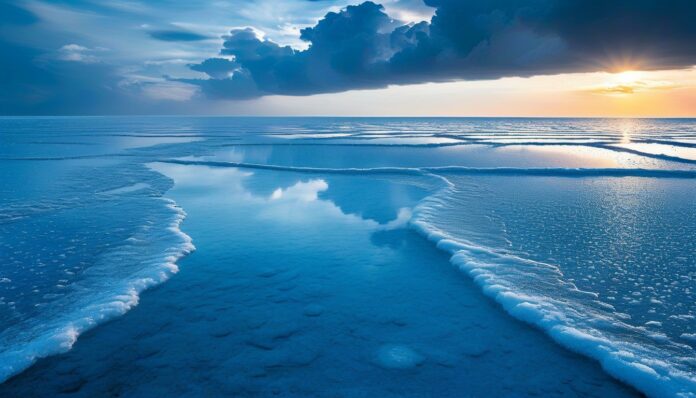There are two types of bodies of water: freshwater and saltwater. Oceans and seas contain a significant amount of sodium chloride, making them unsuitable for drinking. The salinity levels vary, but on average, each liter of seawater contains about 35 grams of sodium chloride. So, where does the salt in the world’s oceans come from?
For a long time, people couldn’t find an answer to this question. If freshwater rivers flow into the ocean, how does it remain salty? The first theory was proposed by Edmund Halley in the early 18th century. He suggested that evaporation was the key. According to Halley, since salt is present in small quantities in many places on Earth’s surface, rivers and lakes also contain it, albeit in minimal amounts.
Edmund Halley’s Theory
Edmund Halley was an English geophysicist, astronomer, meteorologist, physicist, mathematician, and demographer. He was also a Fellow of the Royal Society and a foreign member of the French Academy of Sciences.
Halley proposed that since oceans have no outlet, the evaporation of water from the ocean’s surface leaves the salt behind, gradually increasing its concentration. Over time, this process made the world’s oceans salty.
This theory held for several centuries.
Re-evaluation of Halley’s Theory
However, scientists later questioned Halley’s theory. If Halley was correct, the salinity of oceans and seas should have increased slightly over three centuries. But this has not been observed. The salinity levels in different seas vary, but each sea’s salinity has remained within the statistical error margins during observations and has not increased.
After carefully studying the salt content in rivers, Halley’s theory was revised.
Freshwater bodies contain different salts—primarily carbonates. They have very few chlorides, meaning they carry carbonate impurities to the oceans. Marine organisms consume most of these carbonates, and the rest settle to the ocean floor. These impurities cannot create the saline suspension found in the sea.
Modern Hypothesis: Volcanic Activity
In the early stages of our planet’s formation, volcanic activity was high. Volcanic emissions, combined with precipitation, entered the oceans, making the water acidic and creating a highly aggressive environment.
Acidic water interacted with the minerals of the ocean floor and the adjacent land, gradually dissolving them. Basalts and other rocks in this environment were alkaline. The reaction between the acidic water and these rocks produced salts that dissolved in the oceans.
About 500 million years ago, the intense volcanic activity on Earth decreased to modern levels.
For some time, water continued to dissolve basalts until its acidity diminished. The salt that had already formed had nowhere to go and remained in the water. According to this theory, this is why the average salinity has remained stable. The reactions that produced sodium chloride have ceased.
Thus, the salinity of the oceans is a result of complex geological processes that took place over millions of years, rather than the ongoing contribution of freshwater rivers.
